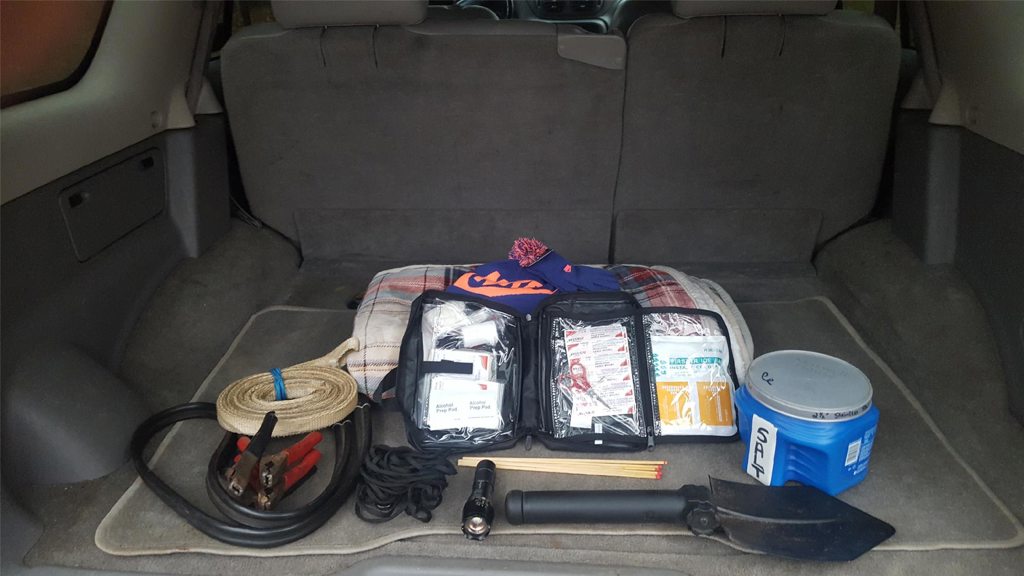
Penn Highlands Healthcare Offers Winter Safety Tips
Winter is in full-swing and area residents are preparing for snow, ice and frigid temperatures. These conditions can lead to weather-related injuries. According to Dr. Shaun Sheehan, emergency medicine service line medical director and Transfer Center medical director at Penn Highlands Healthcare, many of these injuries can be easily prevented by using good judgment when dealing with the elements.
Safe driving/travel preparedness
“The most significant injuries treated by Emergency Department staff during the winter are the result of motor vehicle accidents,” Sheehan said.
“Many car accidents can be prevented by taking your time and giving yourself sufficient travel time to reach your destination, especially when the weather isn’t ideal. When people drive too fast for conditions, an accident is bound to happen,” he said.
“Always wear a seat belt. I cannot overstate the importance of seat belts in preventing serious injuries. The bottom line is that seat belts save lives,” Sheehan added.
Winterizing your vehicle is also important. Be sure to check your antifreeze and oil levels. In addition, carry a winter car kit that includes a windshield scraper, flashlight, candle and matches, tow chain or rope, shovel, tire chains, blanket, extra gloves, bag of sand or salt, a fluorescent distress flag, an emergency flare and some water and non-perishable food.
It’s also recommended that you keep your gas tank at least half-filled and never run low on gas during the winter months.
It’s also important to remember that drinking and driving can lead to deadly consequences. Those partaking in alcoholic beverages are encouraged to ride with a designated drive, stay overnight at the place of celebration, if possible, or consider taking a taxi or Uber home.
Hypothermia
Hypothermia occurs when more heat is lost from the body then it can generate. It happens when a person is exposed to cold temperatures without proper protection. Symptoms include confusion, difficulty walking, slurred speech, shivering, cold skin and fatigue.
Treatment of hypothermia begins with getting the victim indoors. Remove wet clothing, put on warm, dry clothing and wrap the person in a blanket. If going indoors is not possible, Sheehan advised to get out of the wind, cover the person’s head and insulate them from the cold ground. If they are able to swallow, give them warm, non-alcoholic fluids. If symptoms do not improve, seek medical attention as quickly as possible.
“Hypothermia prevention begins by limiting your exposure to cold weather,” Sheehan said. “Dress in layers. Wear a hat to decrease loss of body heat.”
He also recommended that you avoid activities that can adversely affect your health and limit your body’s ability to compensate for cold exposure, such as smoking and drinking alcohol.
Preventing falls
You’re bound to encounter slippery walking surfaces this time of year, no matter how well the snow and ice is removed from parking lots or sidewalks. It’s important to pay special attention in order to prevent a fall.
“It’s recommended that, when temperatures are low, you be cautious and consider that all wet, dark areas on pavement could be slippery,” Sheehan said. He recommended wearing shoes or boots that provide traction on snow and ice, as well as staying in designated walkways, avoiding shortcuts over snow piles and other frozen areas.
When navigating a slippery surface, it’s also recommended that you walk like a penguin. Point your feet out, slightly, to increase your center of gravity. Bending slightly and walking flat-footed with your center of gravity directly over your feet can help you maintain your balance. In addition, take your hands out of your pockets and extend your arms to your sides to help keep you balanced. Steps should be short, even shuffled when walking on a slippery surface.
If you do fall, try to avoid landing on your knees, wrists or spine. Instead, try to land on a fleshy part of your body, such as your side. In addition, try to relax your muscles. Injuries can be worsened by tensing up during a fall.
Most importantly, take your time. Walk slowly and cautiously. If you suffer an injury from a fall, seek care from your primary care provider, from a local QCare Walk-In clinic or from the closest Emergency Department.

